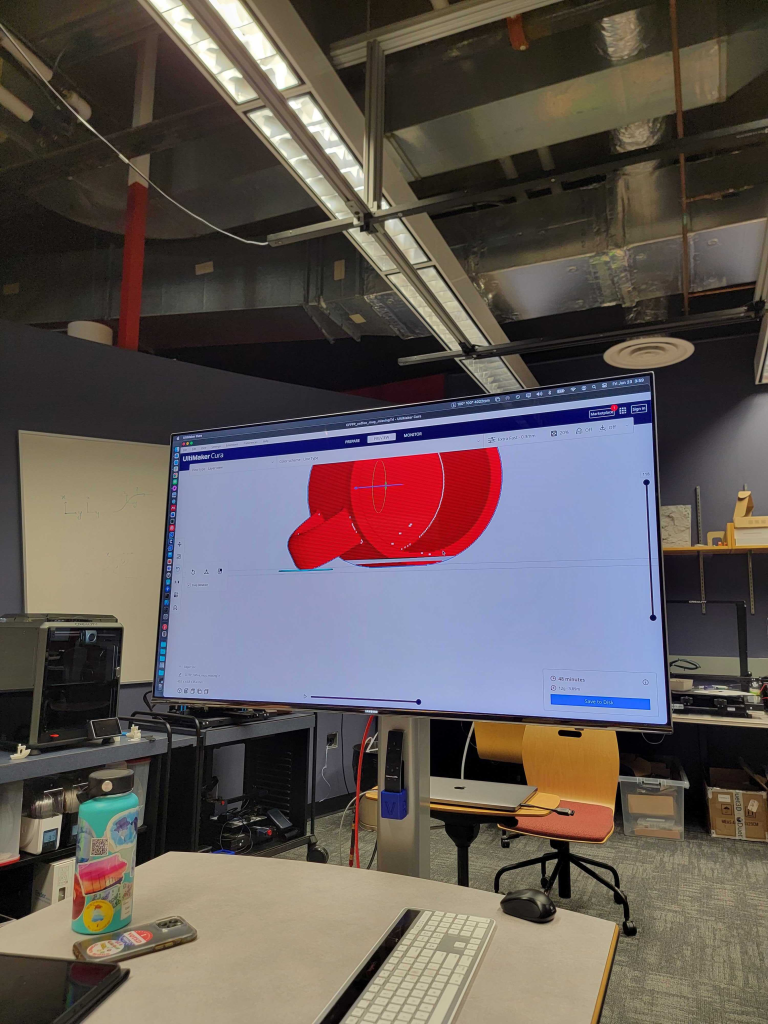I mainly spent my time today on diving even deeper into 3D printing, specifically on things that can go wrong during the process.
The workflow from creating a CAD model to printing it appears to be simple due to slicer programs that can generate slices with several clicks on a computer. However, there are many more factors that can affect the quality of the final product.
In Alex’s words, slicer previews are “idealized” representations of the final product, meaning they show the best-case scenario. However, printed filaments may sag or be distorted without proper support. Likewise, surfaces may not be smooth as appeared due to “seams” which show on each layer. Finally, user errors, such as deleting a triangle in a model, might lead to certain layers not appearing (below). To understand this, Alex discussed how slicing from STL-based 3D models work.

Slicers take slices, or cross-sections, of 3D models in the z-direction. From these cross-sections, 2.5D layers are generated. While these layers are based on 2D shapes, they also have a vertical dimension (thickness), leading to them having volume. As a result, slicer software must choose to under- or over-estimate the volume of the slices, which reminded me of estimating Riemann sums in calculus.
At the same time, slicers must also determine whether a point is inside or outside of a watertight cross-section. In the picture above, where a triangle was removed, the slicer can’t resolve the missing surface, preventing layers from being determined.
Although 3D printers seem to be easy-to-use, being mindful of the slicing process is necessary to print a satisfactory product.
